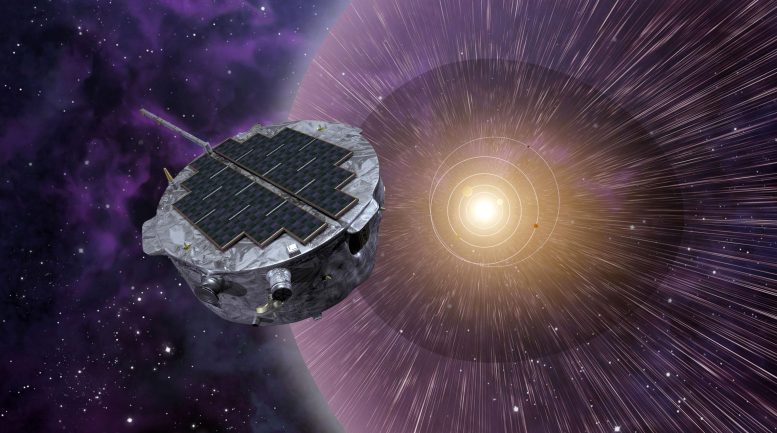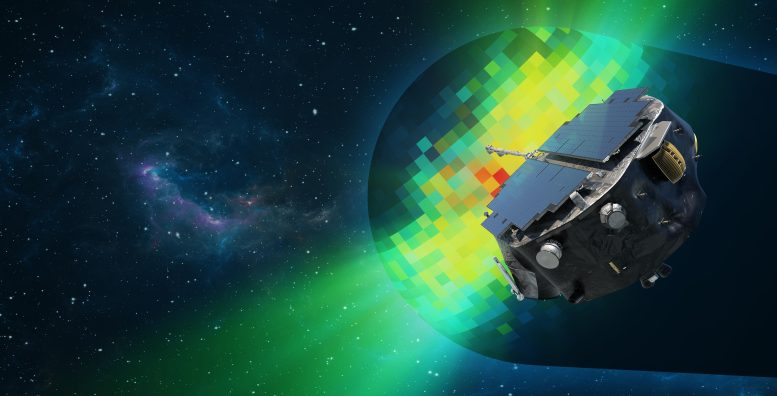
Artist’s impression of the Interstellar Mapping and Acceleration Probe (IMAP). The mission will help us better understand the flow of particles from the Sun called the solar wind — and how those particles interact with space within the solar system and beyond. Credit: NASA/Johns Hopkins APL/Princeton University/Steve Gribben
NASA’s IMAP project, aimed at exploring the heliosphere’s boundaries, completed a vital development phase and is set for assembly and testing.
The Interstellar Mapping and Acceleration Probe (IMAP) marked the completion of an important step on the path to spacecraft assembly, test, and launch operations this week at Johns Hopkins Applied Physics Laboratory (APL) in Maryland.
The IMAP team met with a review panel to evaluate the plan for integrating all systems onto the spacecraft, such as the scientific instrumentation, electrical and communication systems, and navigation systems. Successful completion of this System Integration Review (SIR) means that the project can proceed with assembling and testing the spacecraft in preparation for launch. This process is a bit like a carefully choregraphed dance where the instruments and support systems are delivered to different facilities, tested together in chambers in Los Alamos, New Mexico; San Antonio, Texas; and Princeton, New Jersey; and shipped back to be integrated and tested again altogether.

IMAP will study the protective magnetic bubble that surrounds our solar system, called the heliosphere, and the particle acceleration that occurs across it. Credit: NASA/Princeton/Johns Hopkins APL/Josh Diaz
On Friday, September 15, 2023, the chair of the Standing Review Board announced that the IMAP project successfully passed the SIR requirements to proceed to integration and test.
“I am incredibly proud of the entire IMAP team for everyone’s hard work and determination in getting us to and through this critical milestone,” said David McComas, IMAP mission principal investigator and Princeton University professor. “We are now moving on to spacecraft integration and test, where all of the individual subsystems and instruments merge together to create our full IMAP observatory.”
The IMAP mission, which will be ready to launch in 2025, will explore our solar neighborhood, decoding the messages in particles from the Sun and beyond our cosmic shield. The mission will map the boundaries of the heliosphere – the electromagnetic bubble surrounding the Sun and planets that is inflated by the solar wind.
David McComas leads the mission with an international team of more than 20 partner institutions. APL is managing the development phase, building the spacecraft, and will operate the mission. IMAP is the fifth mission in NASA’s Solar Terrestrial Probes (STP) Program portfolio. The Explorers and Heliophysics Projects Division at NASA’s Goddard Space Flight Center in Greenbelt, Maryland, manages the STP Program for the agency’s Heliophysics Division of NASA’s Science Mission Directorate.









Be the first to comment on "NASA’s Interstellar Mapping and Acceleration Probe Passes “Critical Milestone”"